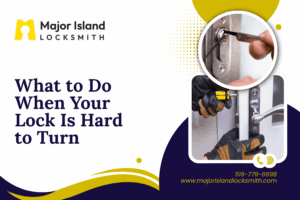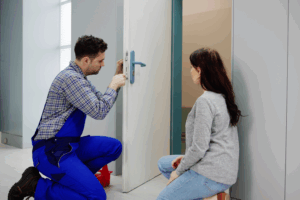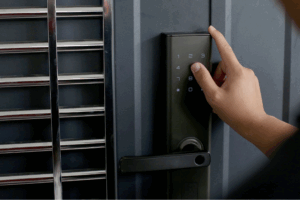As a homeowner or business owner, encountering lock problems can be frustrating and inconvenient. Whether you have a traditional lock, electronic lock, or a combination lock, they are all susceptible to issues over time. In this article, I will discuss some common lock problems and provide troubleshooting tips to help you resolve them.
Importance of Troubleshooting Lock Problems
Lock problems can occur unexpectedly and can compromise the security of your property. Ignoring these issues can lead to more significant problems, such as lockouts or break-ins. Troubleshooting lock problems promptly is crucial to ensure the safety and functionality of your locks. By understanding the common issues and knowing how to address them, you can save time and money by avoiding unnecessary repairs or replacements.
Different Types of Locks and Their Potential Issues
Locks come in various types, including deadbolt locks, door latch locks, padlocks, and electronic locks. Each type has its own potential issues. Deadbolt locks, for example, can become misaligned due to loose screws or worn-out components. Door latch locks may experience problems with the strike plate or the latch itself. Padlocks can become rusted or jammed over time, making them difficult to open. Electronic locks may have issues with power supply or faulty programming. Understanding the type of lock you have and its potential issues is the first step in troubleshooting.
Troubleshooting a Stuck or Jammed Lock
A stuck or jammed lock can be a frustrating problem that prevents you from entering or leaving your property. To troubleshoot this issue, start by applying lubricant to the keyhole. Use a graphite-based lubricant or a silicone spray to ensure smooth movement. Insert the key into the lock and gently jiggle it to dislodge any obstructions. If the lock remains stuck, try using a lock lubricant or graphite powder to further loosen any debris. If these methods fail, it may be necessary to call a professional locksmith to avoid causing further damage to the lock.
Fixing a Broken Key in a Lock
Breaking a key inside a lock can be a stressful situation. To safely remove a broken key, you will need a pair of needle-nose pliers or tweezers. Carefully insert the pliers or tweezers into the keyhole and grip the broken key fragment. Gently pull the key out, making sure not to force it or cause any additional damage. If the broken key is deeply lodged or you are unable to remove it yourself, it is best to contact a professional locksmith to avoid further complications.
Dealing with a Loose or Misaligned Lock
A loose or misaligned lock can compromise the security of your property. To troubleshoot this issue, start by tightening the screws that hold the lock in place. Use a screwdriver to securely fasten the screws, ensuring that the lock is firmly attached to the door or frame. If the lock remains loose or misaligned, it may require adjustments to the strike plate or latch. Loosen the screws on the strike plate and adjust its position to align with the latch. Tighten the screws once the alignment is correct, and test the lock to ensure proper functionality.
Identifying and Resolving Issues with Lock Cylinders
Lock cylinders are essential components of many types of locks and can experience various issues. If you notice that the key is difficult to insert or remove, the lock cylinder may be dirty or worn out. To troubleshoot this problem, use a can of compressed air to blow away any debris inside the keyhole. If the issue persists, consider lubricating the lock cylinder with a graphite-based lubricant to improve its smooth operation. In some cases, a worn-out lock cylinder may need to be replaced by a professional locksmith.
Addressing Issues with Door Latch and Deadbolt Locks
Door latch and deadbolt locks are fundamental for securing your property. However, they can suffer from problems such as sticking, misalignment, or failure to retract. Troubleshooting these issues involves ensuring that the strike plate is properly aligned with the latch, adjusting the strike plate if necessary. Additionally, applying a lubricant to the latch and other moving parts can help improve the lock’s functionality. If the problem persists, it is advisable to consult a professional locksmith to assess and repair or replace the lock if needed.
Preventive Measures for Avoiding Lock Problems
While lock problems are inevitable over time, there are preventive measures you can take to minimize their occurrence. Regular maintenance, such as cleaning and lubricating your locks, can prolong their lifespan and prevent issues. Avoid using excessive force when operating your locks, as this can cause damage. Be mindful of your keys and avoid bending or forcing them into the lock. Additionally, consider upgrading to more durable and secure locks to reduce the risk of future problems. By taking these preventive measures, you can save yourself from the inconvenience and expense of frequent lock issues.
Conclusion and Final Tips for Troubleshooting Lock Problems
Encountering lock problems can be a frustrating experience, but with the right knowledge and troubleshooting techniques, you can resolve many issues on your own. Remember to identify the type of lock you have and understand its potential issues. Whether it’s a stuck lock, broken key, loose lock, or misaligned lock, following the appropriate troubleshooting steps can help you resolve the problem. However, if you are unsure or unable to address the issue, it is always best to seek the assistance of a professional locksmith. By taking preventive measures and promptly addressing lock problems, you can ensure the security and functionality of your locks for years to come.
For professional locksmith services and expert advice on lock troubleshooting, Contact us today. Our team of experienced locksmiths is ready to assist you with any lock-related issues you may have. Don’t let lock problems compromise your security – reach out to us now!




